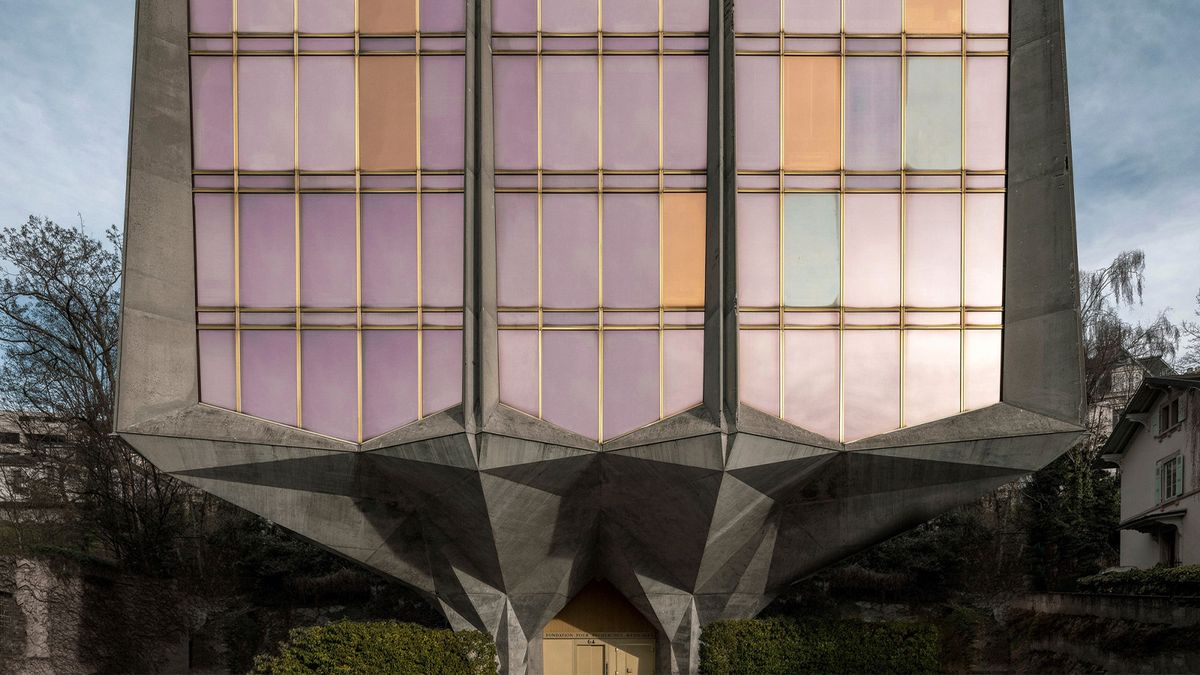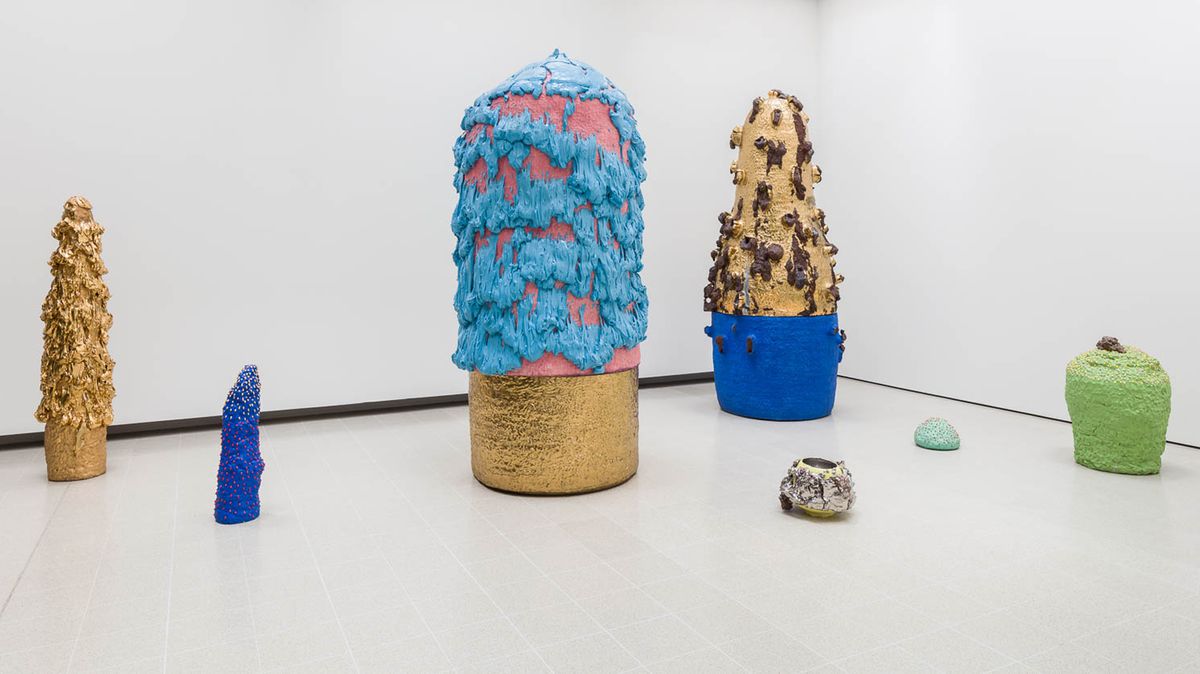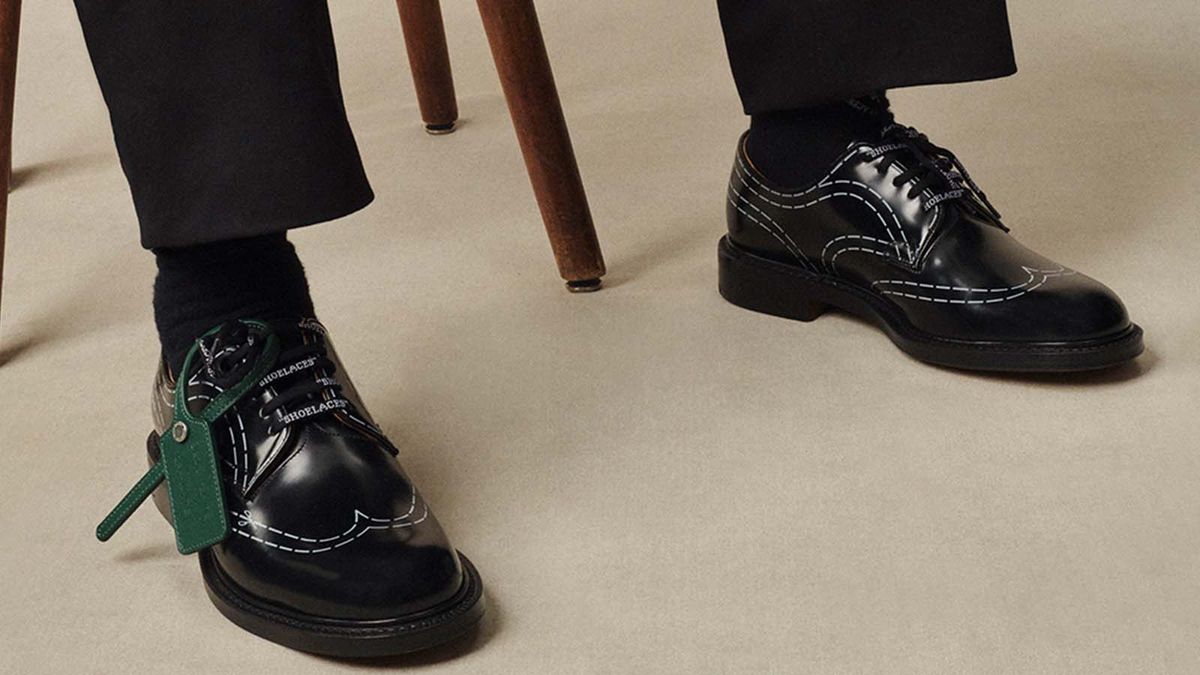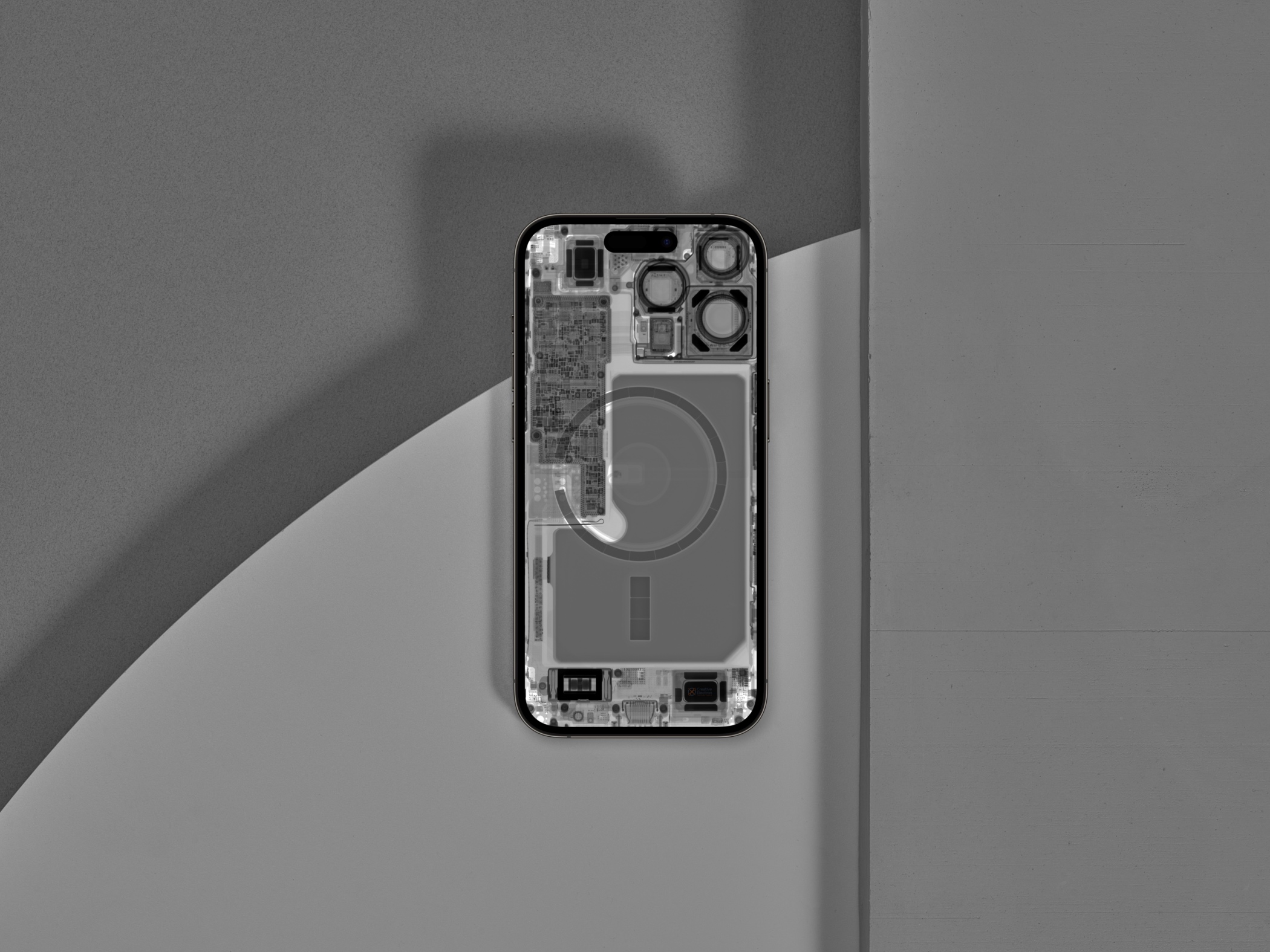Hide your Lock Screen clock with these perfectly fitting super hero Depth Effect wallpapers.
http://dlvr.it/SbzLy3
luni, 31 octombrie 2022
duminică, 30 octombrie 2022
Tiwa Select New York space opens with exhibition by Megumi Shauna Arai
Tiwa Select debuts first IRL New York space, showing Megumi Shauna Arai’s ‘Moments of Fulfilment’
http://dlvr.it/SbxCXz
http://dlvr.it/SbxCXz
‘Strange Clay’ review: a mucky, uncanny, visceral survey of ceramic art
At London’s Hayward Gallery, group show ‘Strange Clay: Ceramics in Contemporary Art’ sees ceramic artists explore the physical, psychological, political and power of their medium
http://dlvr.it/SbxCKQ
http://dlvr.it/SbxCKQ
sâmbătă, 29 octombrie 2022
Forever Valentino: inside the Italian house’s most comprehensive exhibition yet
Qatar Museums and Maison Valentino present ‘Forever Valentino’, an homage to founder Valentino Garavani which spans 1959 to present day
http://dlvr.it/Sbv6q7
http://dlvr.it/Sbv6q7
vineri, 28 octombrie 2022
Explore Daniel Arsham’s ‘Relics in the Landscape’ at Yorkshire Sculpture Park
Daniel Arsham’s exhibition of outdoor sculpture draws from three millennia of culture, from the Venus of Arles to Pikachu
http://dlvr.it/SbrGdZ
http://dlvr.it/SbrGdZ
joi, 27 octombrie 2022
Off-White c/o Church’s by Virgil Abloh: a closer look at the latest instalment
Off-White c/o Church’s is one of the late Virgil Abloh’s final collaborative projects. The third drop is released this week
http://dlvr.it/SbqTB5
http://dlvr.it/SbqTB5
duminică, 23 octombrie 2022
Apple “Take Note” iPad announcement wallpapers for iPhone
Check out the Take Note iPad event wallpaper, inspired by Tim Cook's tweet of the forthcoming announcement.
http://dlvr.it/SbZWw7
http://dlvr.it/SbZWw7
marți, 18 octombrie 2022
New 2022 iPad and iPad Pro advertising wallpapers
Download these awesome wallpapers featured on the brand new 10th-generation iPad and M2 iPad Pro that Apple launched in October 2022.
http://dlvr.it/SbKTzB
http://dlvr.it/SbKTzB
duminică, 16 octombrie 2022
Tips on Creating Artworks Specifically for Scanning
Creating works expressly for scanning/capture into a digital form? We've got some tips on how to get better results.
http://dlvr.it/SbBlwT
http://dlvr.it/SbBlwT
Amazing iOS 16 Depth Effect wallpapers for iPhone
Download 20 Depth Effect wallpapers that creatively hide the new iOS 16 iPhone Lock Screen clock behind the focal subject.
http://dlvr.it/Sb9w19
http://dlvr.it/Sb9w19
sâmbătă, 15 octombrie 2022
Ruinart offers food for thought at Frieze London
There’s nothing quite like the marriage of art and gastronomy. On 12 October 2022 at Frieze London, Ruinart united chef Adam Byatt and Ruinart Carte Blanche artist Jeppe Hein to celebrate the magnificent intersection of these worlds. Food for Art – here taking the form of a lunch and a dinner sitting at Trinity Restaurant – is a dining experience that draws on Hein’s Right Here, Right Now installation, which is being staged at the Ruinart Art Bar at Frieze London from 12-16 October.
One of Adam Byatt’s dishes for Ruinart Food for Art 2022
The five-course multisensory culinary experience is the result of a gastronomic interchange between Byatt and Hein’s Carte Blanche commission, which drew inspiration from Maison Ruinart’s heritage, savoir-faire and champagne creation process – a celebration of beauty, taste and the natural elements. Food for Art is a reflection of Hein’s participatory approach to the commission and includes an interactive course that reflects the four elements and the four seasons.
One of Jeppe Hein’s speech bubbles from Right Here, Right Now, his Ruinart Carte Blanche commission, on show during Frieze London 2022. Image courtesy Ruinart
Among the inventive offerings are edible autumnal leaves, a seaweed-based tea, and vegan caviar, which seeks to reimagine how traditional caviar is sourced and served. Naturally, Maison Ruinart in Champagne is at the heart of the presentation, epitomised in Blanc de Blancs, a course of crisp Chardonnay grapevine leaves. This pure-white dish, evoking the chalk terroirs on which the grapes for Ruinart are grown, is minimal in colour palette yet rich in flavour.
Ruinart Food for Art 2022
The experience is an invitation to activate the senses and reinforce our connection to the natural world, and each other – Food for Art, and food for thought. §
http://dlvr.it/Sb80fN
http://dlvr.it/Sb80fN
duminică, 9 octombrie 2022
Image Science Now a Hahnemühle Platinum Certified Studio
We are now officially a globally-ranked Hahnemühle Platinum Certified Studio - now that's something to celebrate!
http://dlvr.it/SZpCCZ
http://dlvr.it/SZpCCZ
Apple Watch Nike inspired iPhone wallpapers
With the ability to utilize Nike faces on all watchOS 9 devices, grab these Nike inspired "Fitness Wallpapers" to complete your setup.
http://dlvr.it/SZn7vC
http://dlvr.it/SZn7vC
sâmbătă, 8 octombrie 2022
Studioilse and Ames launch tactile lighting collection
Ilse Crawford and Oscar Peña of Studioilse present a new collection of lighting designs created in collaboration with Ames, a company specialising in traditional Colombian manufacturing. The ‘Raiz’ collection of lighting is made of traditional black clay, a material the pair had been wanting to experiment with for some time, and the connection with Ames formed the perfect opportunity.
Founded by Colombian Ana María Calderón Kayser, Ames was born of a deep love for the country and a desire to promote local craft while supporting family-owned workshops working with ancient techniques.
The collection marks a new chapter for the brand, presenting its first lighting products and the debut of its collaboration with Studioilse, continuing its aim of connecting traditional craft with contemporary design. Previous collaborators include Sebastian Herkner, Cristina Celestino, Mae Engelgeer and Pauline Deltour, each of whom brought their creative expertise to Ames, creating objects, accessories, textiles and furniture.
An artisan at work on the black clay lampshade. Image: courtesy Ames
The Raiz collection by Studioilse combines two traditional materials, namely black clay for the shades, and woven palm normally used by artisans to create hats, bags and ornamental objects. For each element, Ames worked with specialised workshops.
Made in Tolima, the black shades are created by two family-owned businesses, which have been operating in the area for decades, working with local potters to create the distinctive objects. The production of each shade takes weeks, a combination of several manual processes. The black clay is dug out of the ground alongside the Magdalena river, then mixed with water to create a mixture that is then shaped by hand. Once dry (a process that can take several days), the lamp shades are placed inside a wood-fired kiln, and fired at low temperatures (making this an energy-efficient, sustainable process). A different process lies behind the coloured shades, featuring a glossy glazed finish.
Ames also worked with the Departamento Nariño in Southwest Colombia, a region known for its workshops that specialise in crafting with iraca palm fibres. Another material-led process, it involves dying the fibres with seeds, leaves, nuts and roots, then drying them for up to six days, and finally weaving them by hand using tweezers, needles and tongs.
Table lamp from the Raiz Collection. Image: courtesy Ames
A big part of Ames’ work in every collection is to insert a contemporary approach into century-old techniques, convincing craftspeople to move away from traditional forms and functions into unexplored territories.
The lamps in the ‘Raiz’ collection feature simple forms, a conscious decision to ensure artisans can efficiently work on the pieces, but also an aesthetic choice. Explains Crawford: ‘When we’re [designing interiors], sometimes what’s missing is that warm, human and tactile design you want everywhere.’ §
Drying clay. Image: courtesy Ames
Artisan at work shaping the lampshade. Image: courtesy Ames
http://dlvr.it/SZjwyc
http://dlvr.it/SZjwyc
vineri, 7 octombrie 2022
Seratech’s innovative sustainable cement wins Obel award 2022
Imperial College London’s Structures Laboratory, or ‘the concrete lab’, is a slightly daunting place where large machines clang and chunks of grey matter set in moulds. However, everyone here is very convivial and jolly greetings abound. In the midst of this orderly yet experimental zone, a banterous pair of young British scientists, Sam Draper and Barnaby Shanks, head towards a small back room where they are scaling up carbon-neutral concrete from tiny cubes to bricks.
Wait, carbon-neutral concrete? Concrete has been a strong, convenient and attractive (to many architecture lovers at least) material used for buildings, cities and infrastructure for centuries – yet now, as the second most consumed material after water, it is responsible for around eight per cent of the world’s man-made carbon emissions. Does what’s happening in this lab in South Kensington mean that, potentially, that eight per cent could be neutralised?
The inside of a scanning electron microscope (SEM), showing the detectors. The pair use this equipment to look at the microstructure of cements. Image credit: Mikey Massey
In theory, yes. And Draper and Shanks, a pair of PhD students who have set up under the name Seratech, have just received the Obel Award to help scale up their work towards this goal. Conferred by the Copenhagen-based Henrik Frode Obel Foundation, the annual global prize prides itself on its responsive, expansive approach to architecture – awarding projects that Bare groundbreaking, socially meaningful, and environmentally positive.
‘As an architecture award, we like to be unpredictable,’ says Jesper Eis Eriksen, head of programme at the foundation. One of the things that makes the award stand out is its ability to shape-shift at the pace of global debate, he explains. Winning projects include a community therapy centre and textile workshop in Bangladesh designed by Anna Heringer (awarded 2020), and Carlos Moreno’s 15-Minute City urban concept (awarded 2021). ‘Architecture needn’t just be architecture. Architecture is also an activity of the mind,’ adds Eis Eriksen.
The award selection process relies on a network of interdisciplinary experts and an esteemed jury, whom Eis Eriksen describes collectively as courageous, experienced, intelligent and gentle: ‘They recognise the need to be challenged and surprised.’ The jury includes chair Martha Schwartz, a landscape architect and urbanist known for her sensitive approach to the environment; Louis Becker, design principal at Henning Larsen Architects, a Scandinavian practice with a sustainable approach; Kjetil Trædal Thorsen, co-founder at the boundary-breaking architecture and design studio Snøhetta; Xu Tiantian, founding principal at DnA_Design and Architecture, adept at blending buildings and landscape; and Wilhelm Vossenkuhl, professor emeritus at the University of Munich, who specialises in the meeting of architecture, design and philosophy. As well as their professional excellence, all were chosen for their humanitarian approaches and diverse life experiences.
An architectural brick made of Seratech’s carbon-neutral composite cement. Bricks such as this one were used to create a ‘Crinkle Crankle Concrete’ wall for the 2022 London Design Festival. Image credit: Mikey Massey
This year, the jury’s award focused on reducing embodied carbon emissions in the built environment sector, which is responsible for almost half of global CO2 emissions every year. After reviewing multitudes of diverse projects, an initial bout of pessimism gave way to optimism, detailed deliberation and consultation with science professionals. The jury then made a unanimous decision on Seratech’s invention.
Could the key to significantly reducing the built environment’s carbon footprint really be found in the cement mixer? The Obel Award jury thinks so. They admired both the material’s ambition and simplicity, and commended it for how it could be easily integrated into existing processes and production lines. Back in the lab, Draper unpacks the theory behind Seratech’s ambition: ‘You need solutions that are scalable, that work everywhere in the world, that use naturally abundant materials, and you need relatively simple processes, too.’
‘The beauty of the idea is that you can just use it as normal concrete,’ says Shanks. ‘There are other carbon-neutral materials, but they can be limiting because they can only be precast, cured in a lab in special conditions and shipped elsewhere. We want people to retain the freedom to use concrete the way that they are used to. We don’t want to limit people in any way because we’ll just lessen the amount of impact we can have.’
Seratech’s carbon-neutral composite cement uses olivine (a common mineral that is the primary component of the Earth’s crust) and waste CO2 from flue gases, which is broken down to release silica (required to bind cement together) and magnesium, which is then combined with waste CO2 gas to make magnesium carbonate. This mix can replace up to 40 per cent of the cement mix and it sequesters around twice as much CO2 than the normal Portland cement – so when the two are blended, the emissions are offset.
The Seratech process also produces silica, which can be used as a supplementary cementitious material in concrete, reducing the amount of Portland cement in the concrete by up to 40 per cent. Image credit: Mikey Massey
‘This is evolution, not revolution,’ says Draper, who has a background in structural engineering. ‘People have done similar things before.’ For example, chemically, the mix is similar to fly ash concrete, a product that already exists on the market. Fly ash, a waste product of the coal industry, also contains a high proportion of reactive silica and can be used as partial cement replacement; it is cut with cement at a similar percentage, which reduces, yet doesn’t neutralise, its impact. The way Seratech processes its olivine is similar to ‘enhanced weathering’, where the powdered mineral is dispersed in the environment to sequester atmospheric CO2 as magnesium carbonate.
Instead of seeing CO2 as a ‘waste product’ of the cement-making process, Draper and Shanks see CO2 as a ‘co-product’ that needs to be designed into a process so it retains its value as a material. The CO2 in their recipe is sequestered during the production of the cement replacement, and contributes to the success of the material. Seratech’s approach is staunchly realist, grounded in an understanding of supply chains and industry, as much as the science of chemistry. ‘It’s not a silver bullet. It’s part of a toolkit,’ says Shanks.
For their part, Shanks and Draper are full of energy, excitement and optimism. They see their Obel Award win as a key moment to reach new audiences, inspire young scientists and encourage cross-disciplinary work: ‘Public opinion is an important factor in an industry trying to do better instead of defaulting to the status quo of the last 40 years,’ says Shanks. ‘Nothing’s untouchable – there are better ways to do things, and now there is a desire to do things better, we need to find solutions.’ §
http://dlvr.it/SZfrkQ
http://dlvr.it/SZfrkQ
joi, 6 octombrie 2022
Battersea Power Station redesign heralds new era for London landmark
The relaunch of the Battersea Power Station has been long awaited – but some 30 years and a couple of attempts on, and now the much loved London architecture landmark is ready to open to the public again. Architecture studio WilkinsonEyre is behind its industrial architecture’s refresh and reimagining into a mixed-use hub with extensive public spaces for all to enjoy. The building is set to throw open its doors to visitors for the first time in decades on 14 October 2022.
The project, a power station originally designed by Sir Giles Gilbert Scott and built between 1935 and 1955, sits at the heart of one of London’s largest redevelopment areas, featuring designs by global names in architecture, such as Frank Gehry’s Prospect Place. But as the area surrounding the industrial building was being built, the station itself was also getting a significant makeover. While aiming to keep the Grade II*-listed building’s historical elements and overall character, WilkinsonEyre transformed this piece of London infrastructure into a complex of commercial, retail, public and residential space. Battersea Power Station’s first homes were released in May 2021, but the wider public has not yet had the chance to peek inside its repurposed, vast halls.
Photography: Brendan Bell
‘Battersea Power Station holds a very special place in many people’s hearts, particularly members of the local community, and after numerous failed attempts to redevelop the site before our shareholders took over the project in 2012, trust and the belief that the building would be restored to its former glory was low. Rebuilding this trust has been one of the biggest challenges in the project outside of the construction elements, and as custodians of one of the UK’s most loved landmarks, we have taken this responsibility seriously and ensured we deliver to the very highest level quality,’ says Simon Murphy, CEO at Battersea Power Station Development Company (BPSDC). He adds that the company actively tried to engage the local community in this large-scale and significant scheme in their neighbourhood.
Battersea Power Station forms part of the overall district’s Phase 2 construction plans (there are seven more phases, including, for example, SimpsonHaugh and Partners and De Rijke Marsh Morgan in Circus West Village’s Phase 1, and Foster + Partners and Gehry Partners in Electric Boulevard, which is made up of Battersea Roof Gardens and Prospect Place as Phase 3). WilknisonEyre took the lead with the power station in ensuring that the existing building’s heritage remains intact and is celebrated, while making this a modern, 21st-century piece of architecture, which fully serves its new purpose.
Photography: Backdrop Productions
The architects are deft hands at the restoration and redesign of historical structures, which fed into their approach here. ‘A clear analogy is the New Bodleian Library at Oxford, another 1930s building by Sir Giles Gilbert Scott, which we restored and reordered in 2006 as the Weston Library,’ says Jim Eyre, founding director at WilkinsonEyre. ‘This was the job that put us in prime position to take on Battersea Power Station. Situated on a prominent site in the centre of Oxford, the building, like the power station, fuses stripped classical and modernist elements in a loosely art deco manner. Also, in the spirit of Battersea Power Station, [the library] presented rather fortress-like elevations to the outside world and was essentially a secret space dominated by its principle function of book storage. In a similar way, a private building has become a public one.’
Sustainability played a key role in the reimagining of the power station, as Murphy flags, while explaining that this truly mixed-used scheme will form a new 15-minute neighbourhood for London. ‘We have tried to reuse as much of the existing fabric within the power station as possible. An example of this is the steel trusses in Turbine Hall A, which were strengthened rather than replaced. We have also sourced many of the new materials here in the UK to help reduce the carbon footprint, such as the 1.75 million bricks that were needed to rebuild the building, which came from the original brickmakers in Gloucestershire and Shropshire.’
Photography: Backdrop Productions
Battersea Power Station is a building of significant scale, comprising two grand halls (the former turbine halls, each with its own architectural character); several old and new entrances; new offices and homes within the existing fabric, and a range of penthouses placed in new structures above the original roof line; as well as, of course, its iconic chimneys (which, for safety reasons, had to be dismantled and painstakingly rebuilt to the original specifications). The north-west chimney will now offer a unique lift experience, leading up to 360-degree panoramic views of London’s skyline. The complex demands of handling listed, historical fabric, slotting in a new design, the combination of public and private aspects, and making sure everything merges harmoniously, while the building performs at the highest level when finished, meant that the project was full of challenges for the architecture and engineering team.
Photography: Backdrop Productions
Sebastien Ricard, director at WilkinsonEyre, recalls a point where the building made them rethink their approach, adjust to an unexpected turn of events, and call upon previously never-used technology to tackle a problem: ‘Our philosophy from the outset was to retain as much as possible of the existing fabric where we could. Our initial response to the Boiler House – where new windows were needed for the offices behind – was to cut them into the existing east main wall (the west wall had been demolished and needed rebuilding). After reviewing the state of the wall, it was registered as a dangerous structure and we concluded we had to rebuild this wall rather than restore it. For the building to retain authenticity as a heritage asset, we used a very innovative prefabricated concrete panel system in which a combination of existing and matching new replacement bricks were set into the panels in the traditional pattern.’
This marriage of time-honed and innovative techniques, old and new elements and material, past and present, quite neatly represents the celebrated building’s new chapter. Now, Battersea Power Station, with its mixture of private and affordable homes, office space and modern retail, indoor and outdoor plazas, is ready to properly welcome the 25,000 people who are estimated to be living and working on site – making it one of London’s largest new hubs of activity, and breathing new life to the much loved cultural icon. §
Photography: James Parsons
Photography: Backdrop Productions
http://dlvr.it/SZbYhp
http://dlvr.it/SZbYhp
miercuri, 5 octombrie 2022
A glimpse inside the strange and secretive world of Serge Lutens
The mirrors in Serge Lutens’ home-turned-foundation in Marrakech are sliver-thin, so you can only see fractions of yourself inside them. They are an apt reflection of Lutens, who likes to speak about the multifarious nature of human beings. ‘We have multiple people inside us,’ he says. ‘That’s what makes us so rich, and what’s surprising about meeting people; to identify these different facets, what their character is built on, how it is shaped.’
To meet Lutens is to discover a man with many, often conflicting, facets. A man who, since 1974, has been building a home to rival any palace in its opulence and beauty, yet which remains largely empty and rarely accepts visitors. A figure routinely lauded as one of the most influential figures in the beauty industry – for his iconoclastic approach to make-up, his subversive campaigns and editorial imagery, and his groundbreaking cosmetic lines – who has spent the past few decades living as a recluse in Morocco.
A person so secretive that he largely refused interviews until recently, but will readily reveal deeply personal and painful aspects of his past. A man so shy that he avoids round spaces, finding them too revealing, preferring to ‘hide’ in corners, yet, when you meet him, is a beacon of warmth and charm, playfully self-deprecating, utterly captivating.
Incense holder from the Serge Lutens home fragrance collection. Image credit: Baud Postma
Born out of wedlock in Lille, France, in 1942, Lutens is, as he puts it, ‘a biological accident’. His mother had to put him into foster care a few weeks after his birth. Lutens speaks openly about how the separation shaped the rest of his life, making him feel ‘always on the margins, a misfit’, and propelling him to find refuge in his own fantasy world. He says of the circumstances of his birth: ‘We will be obsessed with this story our whole life. We will try to transcend that story, to destroy it. But it belongs to us. It’s part of our body, part of our skin. Everything is right there and it will never leave us.’
When Lutens was 20 years old, he relocated to Paris, submitted some photographs to Vogue, and set the course for one of the most illustrious editorial careers of the 1960s and 1970s. He achieved renown as an industry ‘multi-hyphenate’ and ‘polymath’ long before those terms achieved their present-day ubiquity; art directing, photographing and styling all of his own imagery for publications such as Vogue, Elle, Harper’s Bazaar and more.
By that point, he had already established his signature aesthetic: models in nondescript spaces wearing ghostly foundation, extreme eye make-up, graphically painted lips, vinyl hair, and a lot of black (his trademark colour), creating hypnagogic visions of women caught between times and realities – a little bit kabuki, a little bit Weimar, a dash of 1940s Hollywood, an echo of art deco.
Serge Lutens preparing one of his models, Isabelle Weingarten, for one of the photoshoots in the Make-up Art series, an exhibition dedicated to Serge Lutens’ work, presented at the time at the Guggenheim Museum in New York. Image credit: courtesy of Serge Lutens
In 1968, when he was 26 years old, Lutens became the image director for Dior Beauty, creating its first fully-fledged make-up line and overseeing every creative aspect, from make-up colours to editorial images. But the apex of Lutens’ career came with his appointment to Shiseido in 1980, which offered him abundant freedom and resources to create some of the most memorable commercial imagery of the late 20th century. In turn, he transformed the brand from an entity little known outside Japan into an industry titan.
Lutens’ impact on the beauty industry cannot be overstated. His work at Dior laid the foundation for how luxury brands would develop and market beauty ranges. At Shiseido, he informed a style of beauty advertising that survives today. Meanwhile, his eponymous cosmetic line, launched in 2000, is a highly edited toolkit for Lutens-esque beauty, with lipsticks in purples and reds, a variety of primers for creating immaculate skin, and precision eyeliners.
Key players in today’s beauty industry that cite him as an influence include Isamaya Ffrench, who, through her work with brands such as Byredo and Burberry, has pioneered her own disruptive vision of beauty. ‘Serge Lutens was the first person to be a make-up artist on top of being a multidisciplinary artist,’ she says. ‘I recommend anyone who’s not familiar with his work to watch the ads he created for Shiseido’s Inoui line. His work was not a way to document make-up, it was a whole artistic vision, extremely painterly, intriguing and timeless.’
Continuing on Ffrench’s sentiment, make-up artist Lisa Eldridge says: ‘It’s hard to define Serge Lutens, but true to say that he’s one of the most inspiring beauty visionaries of all time. I’ve always admired his incredibly powerful, magical and provocative style, and was greatly honoured to follow in his footsteps back in the early 2000s when I worked as the creative director for Shiseido. One of my favourite things to do was to visit the archives to look through all of his work.’
‘Modigliani’ by Serge Lutens, 1972. Photograph by Serge Lutens, inspired by painter Amedeo Modigliani’s portraits. This image is also part of the photography series that Serge Lutens dedicated to key 20th century painters. To ensure his tribute was as accurate as possible, Serge Lutens had a pair of contact lenses made for the model, so that her eyes would look like the lifeless eyes of characters in most of Modigliani’s portraits. Image credit: courtesy of Serge Lutens
US Vogue editor-in-chief Diana Vreeland called Lutens a ‘revolution of make-up’ in a 1974 issue because he subverted the idea that cosmetics were for ‘improving’ a woman’s appearance; instead, he used make-up as a tool for reconfiguring the human face into new extremes that challenged prevailing beauty orthodoxies.
Thanks to Lutens, glossy editorials and ads suddenly depicted women differently: a model with pencil-thin eyebrows staring into the camera through completely black, narrow eyes; or a ghoulish woman wearing a black leather jacket, her lavender-shadowed eyes partly open, while a plume of blue smoke escapes from her burgundy lips.
Like a cosmetic psychoanalyst, Lutens used these images to plumb the depths of our fears and fantasies. ‘I think life is about chaos and something that we fear. We can change our lives,’ he says. ‘That’s what beauty is about, and to define it, basically, is to betray it. Beauty is there to get us out of our comfort zone, our personal boundaries, even our dislikes.’ The resulting images are as affecting today as ever. ‘His images are always at the back of my head because they’re so unique,’ says Ffrench. ‘His make-up approach was integrated in a bigger picture. His women are ethereal, mysterious, almost haunting, but always incredibly beautiful. I admire that balance.’
’Qué Seurat Seurat’ by Serge Lutens, 1972. Lutens was inspired by the pointillist style of painter Georges Seurat. When it was released, this image was used as the official poster for the Make-up Art exhibition. Image credit: Courtesy of Serge Lutens
Lutens’ most ardent passion these days is fragrances. He launches his first home collection this year, five scents inspired by five different locations – the Moroccan house, Moroccan garden, Japanese house, Scottish house, and a linen cupboard – and available as a home spray, incense with a holder shaped like a black wisp of smoke, and a pagoda-like diffuser. Lutens notes that variety and, uncharacteristically for him, subtlety, were important for this collection.
‘A home scent must serve your home,’ he says. ‘I don’t like smells that feel like they’ve been added to the house. For example, I think it is a nightmare when people use lavender to hide the smell of onions, or use scented paraffin candles to scent a home – it’s dirty, it stinks, it distorts perfume, it kills perfume. For me, a house has an identity and I’m interested in its character, not it doing something else.’
The Serge Lutens Foundation
Lutens creates all of his fragrances in a lab inside the Serge Lutens Foundation, the more than 3,000 sq m complex he has built in Marrakech. This, perhaps more than any of Lutens’ creations, is the most exquisite crystallisation of his unique vision, a dreamscape that simultaneously recalls Borges’ labyrinths, Dracula’s gothic palace, and the opulence of Huysmans’ À Rebours.
The foundation is in the heart of the city, down an old narrow street, past donkey-drawn carts and cars skilfully manoeuvring tight curves made by buildings of washed stone, and vendors selling everything from produce to carpets behind open arched doorways. Its black door looks unassuming enough, but step behind it and the sensorial torrent of the outside world is instantly and dramatically quelled.
Serge Lutens inside one of the narrow hallways of the Serge Lutens Foundation. Image credit: courtesy of Serge Lutens
A dark atrium lets in no natural light, but what little illumination there is from chequer-sized lights or narrow stained glass windows makes it possible to see that every inch of the room is decorated in patterns and textured materials. It is a maze of endless rooms and narrow hallways that feels intimate and mysterious, like the sombre melancholy of an empty cathedral.
Lutens has designed everything in the space, from the abstract patterns that decorate the walls to the furniture that fills the rooms. Everything is in keeping with his style of sumptuous eeriness. There are black chairs with backs that resemble cathedral windows; red velvet settees embossed with intricate geometric patterns that are reflected on the ceiling; and hefty black tables covered in curios, such as a dried elephant foot and wooden masks.
It feels like stepping inside a kaleidoscope, with every turn revealing a prismatic array of textures, patterns and objects. The effect is hallucinatory, to the extent that, after an hour of walking around, I glance down at the black-and-white floor and I swear for a brief moment it is levitating.
One of the gardens at the Serge Lutens Foundation. Image credit: courtesy of Serge Lutens
Ushered into one of the house’s cloistered gardens for lunch (and still having only seen a fraction of the foundation), the natural light arrives with a jolt. No doubt, Lutens has designed it this way, to create the sensation of exiting the womb-like interiors to be birthed into the light. When I take a sip of a bubbly brown liquid served from a horn- shaped decanter, I’m shocked to find it is Coca-Cola. By this point, anything so normal feels like an anomaly, a relic of a place we have long since left behind.
There is a multi-room hammam, with bathtubs and faucets, there are tea and cutlery sets, also designed by Lutens. Yet nothing is ever used and few people ever see it.
‘This house is a story of my childhood, a story of my life,’ he says. ‘I bought it in 1974 when I was having a nervous breakdown. When you are in a bad condition, you need to set one single goal, and then you hang on to it. Otherwise, you would just collapse. So I thought, I’m going to buy a house – that’s it. I visited many, many houses... [When] I had only three days left before going back to Paris, an old man in the street, all dressed in white, grabbed my arm and said, ‘I know what you’re looking for, come with me.’
Lutens was taken to a house in ruins, but he ‘immediately felt something... and thought that’s it. That’s the place.’ He moved in briefly but soon felt that the house was ‘rejecting me, pushing me away’. But he did not give it up. Instead, what was planned as a four-month renovation of a single house became a 58-year-long project comprising multiple homes and, with the recent purchase of ten new riads to add to the complex, no signs of finishing soon.
One of the libraries in the Serge Lutens Foundation illuminated and photographed. Image credit: courtesy of Serge Lutens
Lutens concedes he doesn’t really have an ultimate plan for this remarkable, fanatical project. He created the foundation solely for himself, which is part of the reason he has kept it so secret. Yet, he also believes that ‘it belongs to Morocco and no one else’, and suggests that when he dies he will bequeath it to the country. Death is something that seems to play on Lutens’ mind. Over the course of our conversation, I get the impression of a man spending a lot of time looking back.
‘Life goes fast, it goes very fast,’ he says. ‘For a long time, I lived without even knowing it, because I was just enjoying what I did. So I lived, but through other things.I didn’t look to myself to find this idea of happiness because it is absurd. Seeking happiness is basically never finding it, because it is a preconceived idea. It doesn’t work. You can experience some nice moments, but it is not a goal in itself to be happy.’
‘I’ve lived most of my life,’ he continues. ‘I’m 80 years old, so I have some time left, but I know it is unusual to still be here at this age. It is not bad when everything is all right enough in your head that you can build sensitivity through reading, through the people you meet. It is still great to explore, to know you will become intellectually and spiritually richer, and nothing is ever finished until it is really finished.’ §
http://dlvr.it/SZXKBx
http://dlvr.it/SZXKBx
marți, 4 octombrie 2022
Biennale Arcipelago Mediterraneo: reflections on Sicily’s history and futures
The streets of Palermo were buzzing with energy as the Biennale Arcipelago Mediterraneo (BAM), opened its third edition with a series of events in various locations across the Sicilian capital. This was the weekend before Italy’s snap general election, a fact that the organisers couldn’t have anticipated. ‘I kind of like it,’ said BAM’s artistic director Andrea Cusumano. ‘It’s almost as if we’re interfering to voice our views.’
Inaugurated in 2017 – initially, to lay the groundwork for the arrival of Manifesta 12 in Palermo the following year – BAM has made a point of reinventing itself with each iteration, with one constant: the city of Palermo, geographically closer to North Africa than Rome, remains its main protagonist. This sprawling edition is centred on live arts and experimentations, activating the city’s many hidden gems and claiming its public space. ‘My dream is to create a new kind of Black Mountain College here,’ said Cusumano, who was previously Palermo’s deputy mayor for culture and has big plans for its art scene. ‘That’s why we don’t have a curatorial theme, it’s more about the setting as a signifier.’
Exhibition view of Voluspa Jarpa False Flag at ZACentrale, Palermo. Image: courtesy Fondazione Merz
At Fondazione Merz’s new space inside a former factory, a show titled ‘Insolitudine’ comprises four solo exhibitions. There, Chilean artist Voluspa Jarpa mines declassified CIA documents to create room-size installations. Usually focusing on the United States’ secret operations in South and Central America, on this occasion she delved into Operation Gladio as well, which took place in Europe during the Cold War. The Nato countries’ intelligence agencies were involved in clandestine anti-communist operations that have led to a series of right-wing terror attacks across Europe, including in Italy. In a city that has seen its share of violent bloodshed, her installation is sure to strike a nerve, especially as Palermo commemorates the 30th anniversary of the murders of anti-mafia prosecutors Giovanni Falcone and Paolo Borsellino by mafia bombings.
Next to Jarpa’s work, a stunning multi-part installation by Istanbul-based artist Guido Casaretto incorporates material elements from his own community’s history to contemplate the story of the Levantines, or Constantinople Italians. Wood from a church bench in Istanbul’s Levantine quarter and a clay amphora, for example, are broken down to create new sculptures following strict mathematical calculations. This show-within-a-show forms a poetic rumination on migration, complex identities, and interwoven histories across the Mediterranean region.
Guido Casaretto, Black Hole (church bench), 2021, Cast of wood chips. Installation view of Isolitudine at ZACentrale, Palermo. Image: courtesy Fondazione Merz
BAM’s programme will keep evolving throughout its duration, with more exhibitions and events added at different times, including an upcoming installation by Rafael Herman at an as-yet-undisclosed location. In a practice that explores light’s physical and metaphysical qualities, the artist captures landscapes in zero-light pollution areas.
Using a super-long exposure technique he has developed himself, Herman portrays nature’s unseen beauty. During a residency in Palermo’s Fondazione Sant’Elia, which culminated in a major exhibition there earlier this year, he captured nature reserves near Mount Etna, one of the world’s most active volcanoes, on Sicily’s east coast.
La Fila Lunga (the long queue), a performative work by Stefania Galegati and Efi Spyrou. Image: courtesy of the artists
This long-term approach characterises this edition of BAM, with many of the works on view resulting from artist residencies in the city. Earlier this summer, artists Stefania Galegati and Efi Spyrou invited Palermitans to participate in the performance La Fila Lunga (the long queue), in which 150 people gathered in piazza Magione for hours, forming a meandering line to wait for nothing at all. The event was filmed and a screening, offering a moody meditation on the passing of time, took place in the magnificent yet slightly shabby galleries of Fondazione Sant’Elia, in the city’s busy historical centre.
On the museum’s façade windows, Ukrainian artist Daria Koltsova, who’s been in residency there since the spring, created crisscrossing patterns with adhesive tape, referencing the simple means Ukrainian citizens use to protect their windows from the shock waves of explosions. Historically, and during the refugee crisis of the past several years, Sicily has always had a welcoming policy towards immigrants. It remains to be seen how a political turn to the far-right after the weekend’s election will impact the Mediterranean’s largest island. §
Daria Koltsova’s installation, If I can neither feel nor think, where am I then? on the facade of Fondazione Sant’Elia, Palermo. Image: courtesy of the artist
Petra Feriancová, Vertebra, 2022. Installation view of ’Isolitudine’ at ZACentrale, Palermo. Image: courtesy Fondazione Merz
http://dlvr.it/SZT0fh
http://dlvr.it/SZT0fh
duminică, 2 octombrie 2022
Download these internals and X-ray iPhone 14 wallpapers
Peer deep into your handset with these amazingly detailed Apple iPhone 14 teardown wallpapers by iFixit.
http://dlvr.it/SZNNyk
http://dlvr.it/SZNNyk
sâmbătă, 1 octombrie 2022
Måns Tham’s A-frame house is a considered ski lodge retreat
The studio of Swedish architect Måns Tham tends to produce work that displays an alluring balance between a textural celebration of materiality and structural practicality, and its latest residential project is no different. Located in Edsåsdalen in Sweden, a small, friendly village just south of the Åre alpine ski resort, within a lush expanse of spruce and pine, is this A-frame house. Conceived as a ski lodge and inspired by the irregular beauty of the mountain range it faces, the structure is a twist on the traditional A-frame that slots modern luxuries into the timeless design and craftsmanship of the genre.
Heat-treated pine slats clad the north-western and south-eastern façades of the house, punctuated by angular windows. Granite-coloured folded aluminium sheets were moulded by hand to fit the unique curves of the roof. ‘The triangular shape makes the house into a little mountain top in itself,’ Tham explains. ‘As snow piles up in winter the edge between ground and house gets blurred.’
An A-frame house and ski lodge
Photography: Staffan Andersson
The A-frame house is split between two levels, and was partially constructed using prefabricated A-frame trusses. A sequence of curved dormer windows was added to increase the height of the upper floor and ensure spaciousness in areas which would have felt otherwise limited. Long sightlines are revealed through sliding doors and frameless windows. The openings are large enough to flood all rooms with natural sunlight, even during the boreal winter.
The ski lodge is large enough to sleep 12, divided into three suites, each with its own bathroom and lounge. A lobby with storage space for ski equipment welcomes you upon arrival. The master bedroom is positioned just by this entrance area, featuring a window offering a view over the mountains to the south.
Photography: Staffan Andersson
An L-shaped sofa hugs nearly the full perimeter of the ground floor’s living room, with cushions matching the colour of the polished, poured concrete floor. The central fireplace is formed by a curved wall of locally sourced, dark glazed bricks, which appear almost pearlescent.
Most fixed furnishings such as these, as well as the kitchen island, closets, and guest room beds are bespoke to fit perfectly the dimensions and features of the house. ‘It has a palette adjusted to the rest of the house – greys and [beiges], wood and stainless steel,’ Tham says, ‘in order to be part of the whole.’ Even the blinds in the gable bedrooms are custom fit to block the summer’s midnight sun.
Photography: Staffan Andersson
A haven of serenity and relaxation, the ground floor also boasts a jacuzzi, spa, and steam sauna room. Bathrooms are dark, tiled with forest green bricks and oiled wood. The fittings here are simple, unembellished, to ensure the guest’s attention is directed towards the tranquillity of the skies and forest.
Time is an oft-forgotten layer in architecture, but Tham is taking it into account here. The house’s interior reddish larch wood-panelled walls, ceilings, and upper floors, will weather to a deeper brown as they age. Lighting is another key feature of the ski lodge – from the silhouettes of lighting fixtures that echo the house’s triangular structure, to the gold brushed wall lights complementing the warm furnishings. §
http://dlvr.it/SZLQ72
http://dlvr.it/SZLQ72
Abonați-vă la:
Comentarii (Atom)
Step inside La Tulipe, a flower-shaped brutalist beauty by Jack Vicajee Bertoli in Geneva
Sprouting from the ground, nicknamed La Tulipe, the Fondation Pour Recherches Médicales building by Jack Vicajee Bertoli is undergoing a two...

-
Hedi Slimane pays tribute to the organic form of Jean Arp’s work Ptolémée II, in the latest itineration of the Celine Bijoux d’Artistes Proj...
-
The Sotheby’s Milan charity auction in aid of UNICEF takes place tomorrow, including 15 designs from the "Design to Move; 40 Creations ...
-
Mareterra, a Monaco project boasting contributions by Renzo Piano, Norman Foster, Stefano Boeri and Tadao Ando, is set to become a new neigh...

















